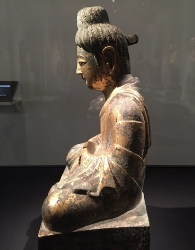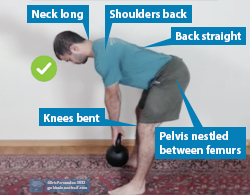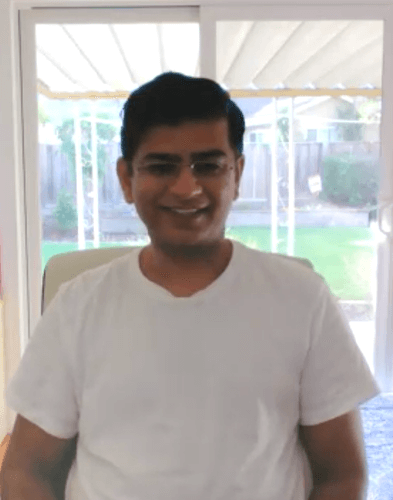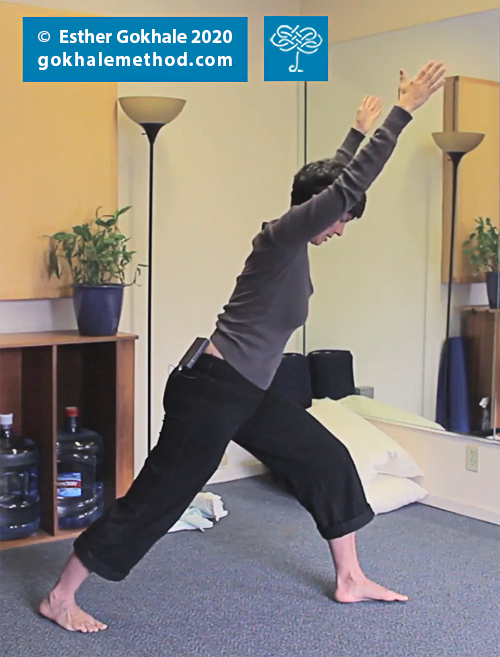This Thanksgiving I would like to honor two people who profoundly influenced the development of the Gokhale Method®.
What Makes the Gokhale® Exercise Program Special
Taking the daily classes has helped me perfect the practice and really get the nuances.
I am now able to accomplish the rib anchor, which I was struggling with. Also, the daily motivation that I get from checking in and feeling the energy from the group—it has just been an amazing opportunity.
Elizabeth Kubicki, Gokhale alumna
Posture Tips for Meditators
It has been over 60 years since Eastern schools of meditation became widely known in the U.S. and Europe, and meditation became widely practiced, with over 14% of Americans having meditated at least once. If we include those practicing mindfulness techniques, using meditation apps, and attending yoga classes with a meditation component, this figure goes far higher.
The effects of sitting in meditation
The potential benefits of meditation are well known, and include a calmer, clearer mind, lower levels of stress, better sleep, improved relationships with others, and better mental health.
From a posture perspective, whether you sit in meditation regularly or are just getting started, you want the experience to be as healthy for your body as it is for your mind.
The New Year 3 x 3 Fitness Challenge: Strength without Strain
We’re here to help with your New Year’s fitness resolution. Join us for a FREE 10-day New Year 3 x 3 Fitness Challenge, which is offered as part of the Gokhale Exercise program. It will be fun, safe, and effective, enabling you to build your strength without strain and injury, because, all the while, you are also training for healthy posture!
How Not To Do Yoga
This blog post explains how some common yoga injuries occur and how applying the principles of healthy posture to yoga postures replaces this scenario with movements that are good for your body.
Yoga postures and back pain
Growing up in Mumbai, India, my Dutch mother was a student of BKS Iyengar and the Satyananda yogis, and keen for me also to learn yoga asanas, or postures. I practiced, and, being reasonably athletic as a child and already trained in Indian classical dance (Bharata Natyam), did not find it particularly difficult to choreograph the back bends, forward bends, and twists that were asked of me. I became a yoga model, demonstrating postures alongside visiting swamis’ presentations to induce the audience to sign up for upcoming yoga courses.
Fixing my Posture Fixed my Pain
I am a 45-year-old software engineer living in California. I grew up and lived in India until I was 37. In my mid-twenties I developed lower back pain and right hip pain, and I recollect having a series of MRIs and medical traction but obtaining nothing more than temporary relief. I also went for Indian massage therapy, which did effectively relieve the pain for some years.
Feet Out or Straight Ahead?
When it comes to foot position, feet parallel is often regarded as the ideal in our present-day culture. Standing with the feet apart, pointing straight ahead, is also seen as the starting point of a normal and healthy gait. Walking then proceeds along two parallel lines, like being on railway tracks.
From a Gokhale Method® perspective, a healthy baseline position for the feet is angled outward 5–15°, or “externally rotated.” Why is there such divergence of opinion—and angle?
Most people learn and then teach feet straight ahead
Feet straight ahead is the model learned and perpetuated by most professionals who are trained in anatomy, whether they are fitness coaches, yoga teachers, Pilates instructors, physical therapists, podiatrists, family physicians, or surgeons. Training regimens, gait analysis, shoe design, and equipment such as elliptical trainers and step machines are also based on this belief.
Why Keep the Body forward in Warrior I Pose?
A general tenet of the Gokhale Method approach is that micro-level adjustments can lead to macro-level results. Like the world we live in, the human body is a complex, interconnected system. So it is not surprising that attainable tweaks in how we use our bodies can have beneficial effects on our function and well-being.
Yoga is no different. If you have an established yoga practice, you’ve probably discovered for yourself that small adjustments are not so small in the aggregate! Learn the specifics of why I make this particular adjustment to Warrior I Pose (Virabhadrasana I) in my latest blog post.
My Favorite Exercises for When You Can't Visit the Gym, Part 1: Chair Pose
Whether you are on the road, in a campground, or just stuck at home during quarantine, you can always exercise. I’ve been dancing since I was a young child, so I have a very strong bias for dance as a way of exercising, but I also like to change it up with other types of exercise. It turns out that we have a lot of options, even when we can’t access the gym. Chair Pose (Utkatasana in Sanskrit) is a great example of an at-home, equipment-free exercise which can strengthen a variety of muscles in very little time. You don’t have to spend forever and a day in Chair Pose to reap its benefits. This makes it a perfect fit for our busy lives.
Cultivating a J-Spine with Chair Pose (Utkatasana)
As a student and teacher of yoga and practitioner of the Gokhale Method, I choose yoga poses that make good use of my time. “Chair pose” is well worth the time investment. In fact, it has become one of my favorite strength-building postures. It is useful for cultivating a J-shaped spine. It helps increase gluteal tone. It helps to pattern healthy hip movement. It is strengthening for the legs and spinal stabilizers. And, last but not least, it allows a yoga practitioner to smoothly transition between a standing forward fold and mountain pose — without compression of the intervertebral discs.
Cecily Frederick in chair pose with J-spine visible, overlaid with SpineTracker™ snapshot.
Detail of









